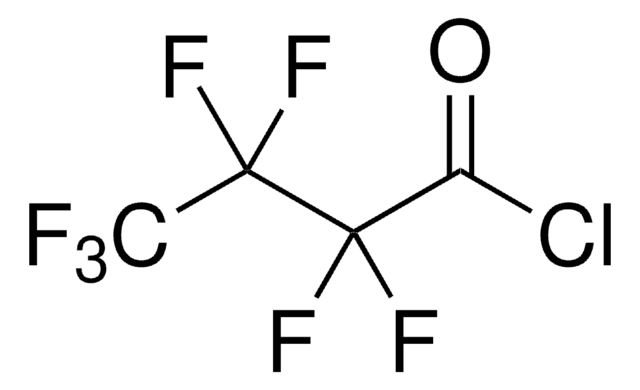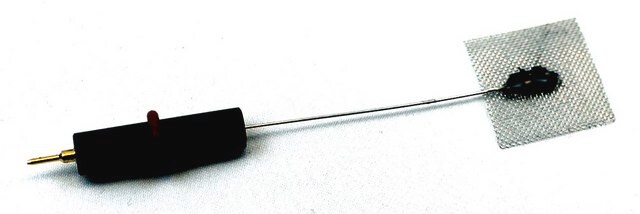Alle Fotos(1)
Wichtige Dokumente
267201
Platin
wire, diam. 0.5 mm, 99.99% trace metals basis
Synonym(e):
Platinelement, Platingrau
Anmeldenzur Ansicht organisationsspezifischer und vertraglich vereinbarter Preise
Alle Fotos(1)
About This Item
Empirische Formel (Hill-System):
Pt
CAS-Nummer:
Molekulargewicht:
195.08
EG-Nummer:
MDL-Nummer:
UNSPSC-Code:
12141734
PubChem Substanz-ID:
NACRES:
NA.23
Empfohlene Produkte
Qualitätsniveau
Assay
99.99% trace metals basis
Form
annealed
wire
Widerstandsfähigkeit
10.6 μΩ-cm, 20°C
Durchmesser
0.5 mm
bp
3827 °C (lit.)
mp (Schmelzpunkt)
1772 °C (lit.)
Dichte
21.45 g/cm3 (lit.)
SMILES String
[Pt]
InChI
1S/Pt
InChIKey
BASFCYQUMIYNBI-UHFFFAOYSA-N
Verwandte Kategorien
Allgemeine Beschreibung
Platin (Pt) ist ein hochduktiles, formbares und nichtreaktives Metall. Es ist korrosionsbeständig und bei hohen Temperaturen stabil. Obwohl es gegenüber Salzsäure und Salpetersäure resistent ist, ist es in heißem Königswasser leicht löslich und bildet Chlorplatinsäure.
Anwendung
Pt-Draht kann wie folgt verwendet werden:
- als Mikroelektroden-Indikatorelektrode in der Voltammetrie
- als transvaskuläres embolisches Mittel
- zur Untersuchung der Chronopotentiometrie von Wasserstoffperoxid mit einer Platindrahtelektrode oder
- in Gasnachweisgeräten.
Menge
400 mg = 10 cm; 2 g = 50 cm
Lagerklassenschlüssel
13 - Non Combustible Solids
WGK
nwg
Flammpunkt (°F)
Not applicable
Flammpunkt (°C)
Not applicable
Hier finden Sie alle aktuellen Versionen:
Besitzen Sie dieses Produkt bereits?
In der Dokumentenbibliothek finden Sie die Dokumentation zu den Produkten, die Sie kürzlich erworben haben.
Kunden haben sich ebenfalls angesehen
Voltammetry with Stationary Microelectrodes of Platinum Wire.
Laitinen HA and Kolthoff IM
The Journal of Physical Chemistry, 45(7), 1061-1079 (1941)
Shai Rozen et al.
Plastic and reconstructive surgery, 131(6), 1253-1265 (2013-05-30)
Left untreated, paralytic lagophthalmos may result in corneal dryness, ulcerations, and subsequent blindness. The most common nondynamic surgical solution is upper eyelid weight placement in a superficial, pretarsal pocket, carrying the risk of visibility, extrusion, and entropion. The authors present
Muhammad Rashid et al.
Journal of nanoscience and nanotechnology, 13(5), 3627-3633 (2013-07-19)
Platinum nanoparticles (Pt NPs) were chemically deposited on a Nafion polymer electrolyte membrane by the impregnation-reduction (I-R) procedure to prepare an active electrode for solid electrochemical sensors. Various analysis methods such as SEM, EDX, XRD and cyclic voltammogram (CV) measurements
Wei Sun et al.
Materials science & engineering. C, Materials for biological applications, 33(4), 1907-1913 (2013-03-19)
In this paper a platinum (Pt) nanoparticle decorated graphene (GR) nanosheet was synthesized and used for the investigation on direct electrochemistry of myoglobin (Mb). By integrating GR-Pt nanocomposite with Mb on the surface of carbon ionic liquid electrode (CILE), a
Yuan Xiong et al.
Organic letters, 15(8), 1962-1965 (2013-04-12)
Metal-mediated rearrangements of 3-alkynyl flavone ethers are reported. The overall process involves 5-endo enyne cyclization to a platinum-containing spiro-oxocarbenium intermediate which may be trapped with methanol to produce spirodihydrofurans or further rearranged to afford either allenyl chromanediones or benzofuranones.
Unser Team von Wissenschaftlern verfügt über Erfahrung in allen Forschungsbereichen einschließlich Life Science, Materialwissenschaften, chemischer Synthese, Chromatographie, Analytik und vielen mehr..
Setzen Sie sich mit dem technischen Dienst in Verbindung.



